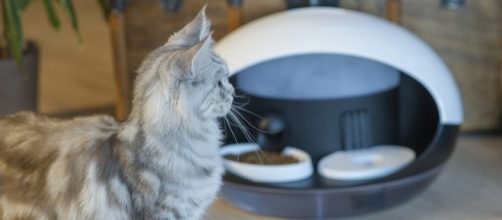Less than a year ago, one industry expert predicted that we would soon enter a world where everyone would be unthinkably connected. Based on announcements coming out of Las Vegas this week as part of the massive CES (consumer electronics) trade show, where everything from connected umbrellas to mobile-linked golf clubs are on display, that time has indeed arrived. But the real kicker is that many of the new smart gadgets are equipped with the ability to also listen and learn.
At CES, the largest annual gathering of technology companies in the world with over 165,000 attendees and nearly 4,000 exhibitors this year (show organizers claim the event attracts more media than the Olympics), connectivity is king.
This means that every consumer gadget imaginable now offers WiFi linkage, which opens the door to data collection, deep learning, and the ability to process and act on voice commands.
Connected trash cans and wine bars are on display
We all know about smart cars and phones. But the new frontier now includes connected bicycle helmets (Livall), shoe insoles (Feetme), pet feeders (Catspad), padlocks (Tapplock), and jewelry that lets the wearer pay for items (Tappy). There’s also a connected wine bar (10vins), trash can (GeniCan), dog collar (Link AKC), walking cane (Nov’in), and even a cube for brewing tea (42tea), in addition to the aforementioned umbrella (Oombrella) and golf club (CRP Group). As Shawn DuBravac, the chief economist for the Consumer Technology Association, told assembled media in a press briefing yesterday, “We are redefining what the network really is.”
The explosion of connected gadgets is being driven by higher network speeds enabled with 5G technology, along with increased capacity to process all of the data these devices generate.
But the more significant development is that with connectivity comes the ability to process and respond to voice commands along with artificial intelligence to help devices learn human needs and habits.
According to DuBravac, the error rate for understanding voice commands has now reached “human parity,” and this is leading to a major increase in vocal applications attached to consumer products. “I wouldn’t be surprised to see 700 new apps launched for the voice platform alone during CES this week,” said DuBravac.
LG announces full connectivity for home appliances
A prime example of this can be found in the announcements earlier today by LG Electronics at their CES media event. In rolling out their new line of home products, the South Korean company declared that all of LG’s appliances will be equipped with WiFi connectivity.
In addition, LG is integrating artificial intelligence (AI) technology into their home products. “This will allow our appliances to not only be smart, but also continuously learn,” said David VanderWaal, LG’s vice president of marketing. This means that washing machines will now sense the presence of hard water and adjust cycles accordingly. Robot vacuums can quickly learn where the obstacles are in the living room and navigate around them.
The full package of Internet connectivity combined with deep learning and voice command processing can be found in LG’s new refrigerator. The “Smart Instaview” Refrigerator includes cameras that will send pictures of what’s inside to the owner’s mobile phone.
Through LG’s partnership with Amazon, the refrigerator will respond to Alexa-based voice commands to let the homeowner order groceries (presumably from Amazon). And, like the all-knowing Alexa, LG’s refrigerator will listen and learn the owner’s food habits, thus bringing artificial intelligence to today’s smart home.
“Now consumers can stay connected in ways they never thought imaginable,” said LG’s VanderWaal at the press event in Las Vegas. As CES kicks into high gear tomorrow, staying connected will be the week’s major theme.

